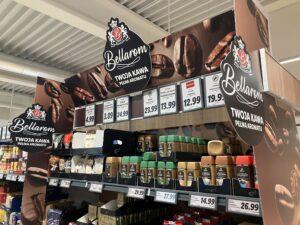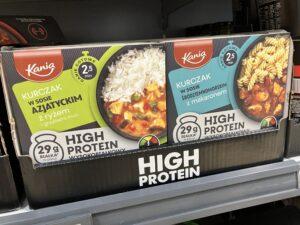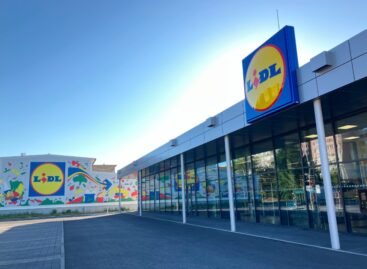Private Labels Are Quietly Winning Europe’s Grocery Shelves
Private labels are no longer just catching up – they are outpacing. Across Europe, retailer brands are expanding in both share and stature, aided by structural, political, and shopper-driven tailwinds. While manufacturer brands face mounting challenges, retailers are quietly reshaping the rules of value, availability, and trust. Seven reasons why private labels will continue to gain ground.
This article reflect the author’s personal view and analysis
Private labels are gaining ground across Europe

Sebastian Rennack
international retail analyst
Aletos Retail
Across Europe, private labels continue to expand their market share as budget-conscious shoppers increasingly prioritize value. Willingness to try lesser-known private labels has risen, helping them shed the outdated stigma of low quality. According to NielsenIQ’s Strategic Planner, private labels reached a 28.6% value share in FMCG retail across 26 European countries by the end of 2024, a gain of 0.9 percentage points over two years. This increase is driven largely by developments in Western, Northern, and Southern Europe, while Central and Southeast Europe also recorded growth, albeit at a slower pace due to structural and cultural factors.
Spain stands out
The strongest momentum came from Southern Europe, especially Spain. In Spain private label share grew by 3.1 points to 45.7% within the past two years. The main driver: the expanding power of retailers with private label at their core. According to Kantar world panel data, Spanish market leader Mercadona grew its overall market share from 24.6% to 26.4% from end of 2022 to end of 2024, while Lidl during the observed rose from 5.5% to 6.6%. Crucially, these two players have exceptionally high private label shares in their sales, estimated at 74.5% and 81.9% respectively in 2024. Their combined growth in total market share directly lifted the overall private label value share of the whole market.
Private label gains ground in CSEE despite cultural and structural barriers
In contrast, private label expansion in Central and Southeast Europe (CSEE) is slower, hampered by the region’s strong local food heritage and fragmented retail structures. These factors limit the international standardization on which many private label strategies, especially discounter-driven ones, rely for economies of scale. Still, the region saw modest progress: the average private label value share across nine countries, from Poland and Czechia down to Serbia, increased from 20.3% to 20.9%. Poland stood out, increasing its private label share by 2.0 points to 27.1%, driven by discounter penetration surpassing 40% of FMCG sales. The value for Czechia, historically a market dominated by hypermarkets such as Tesco, Kaufland, Albert, and Globus, rose by 2.2 points to 21.7% due to continued expansion by Lidl and Penny.

Baltic exception: Private label share declines after inflation spike
Lithuania and Latvia represent the opposite trend. Each saw a 0.9-point decline in private label share, despite previously high levels of food inflation, 33.5% in Lithuania and 31.5% in Latvia by the end of 2022, among the highest in Europe. This suggests a rebalancing of purchasing behavior back to pre-inflation patterns. Importantly, Lidl remains the only discount retailer with a private-label-centric assortment in these countries, and its expansion has slowed considerably in the past two years, limiting further gains in private label share.
Private label growth continues
Despite signs of deceleration in 2024, the trajectory of private label growth has not plateaued. The evolution is also qualitative: private labels are now driving innovation in premium, health-focused, and convenience categories.
Looking ahead, it seems increasingly likely that private labels will, over the long term, continue to outgrow manufacturer brands, not only in volume but in strategic relevance.

Seven reasons why private labels will continue to gain ground:
1. Retailer brands benefit from lack of comparability of private labels
Retailers maintain exclusive control over their private label pricing and positioning. In contrast, brands are becoming increasingly vulnerable to national transparency tools, such as Romania’s publicly accessible price comparison platform. These tools highlight brand pricing across retailers, while private label items remain excluded. In other countries of Central and Southeast Europe, the topic of national price transparency for grocery products is coming up time and again.
2. EU reforms aim to weaken brand protectionism and empower retailers
The European Union has moved to target territorial supply constraints (TSCs), which prevent retailers from sourcing branded products in one country and selling them in another. If implemented effectively, the policy would reduce cross-border price differences and challenge the price segmentation strategies long maintained by multinational brands. This benefits private labels in two ways: it compresses the price gap between brands and retailer labels and strengthens retailers’ leverage in cross-border sourcing.
3. Discounters erode brand price positioning by inducing shopper price fatigue
Discounters like Lidl have sharpened their promotional strategies with campaigns like “Du hast die Wahl” (It’s your choice), offering brands at discounted prices – only to highlight that private label alternatives are even cheaper. From the shopper’s perspective, repeated deep discounts create price fatigue, shifting the perceived reference point toward promotion-level pricing. The regular shelf price feels increasingly detached from value, damaging the brand’s perceived fairness.
4. From private label to own brand
Private label is no longer about cheap basics. Its growth now includes high-protein, health-driven, and food-to-go products designed for time-pressed, health-conscious consumers. These SKUs embody what industry experts call “functional premium” – relevant, affordable, and practical alternatives to traditional brands. Private labels are increasingly seen as fully-fledged brands in their own right.
5. The Robin Hood-Syndrome: Retailers push back with transparency
In Germany, Edeka is using in-store messaging to highlight shelf gaps caused by suppliers demanding significantly higher prices. In France, Carrefour takes a different approach, labeling products where packaging sizes have been reduced while prices remain unchanged, drawing attention to shrinkflation. Both strategies are positioning retailers as allies of the shopper and casting doubt on manufacturer pricing integrity.
6. Supply chain stability in volatile times
Retailers are increasingly turning to vertical integration, via direct sourcing and dedicated production facilities, to mitigate supply risk, inflation volatility, and SKU instability. For groups like Schwarz (Lidl/Kaufland), this has become not only a stability strategy but also a core element of scale. However, as discounter supply chains often rely on centralized production in countries like Germany, political pressure may rise to localize parts of private label production – especially in light of trade tensions and shifting tariff policies. Retailers that proactively adapt to these expectations could further strengthen their strategic position.
7. Retailers lead with clean, customer-first models
Legacy supermarkets remain entangled in brand funding structures and margin-focused strategies. Many still chase percentage margins instead of optimizing product velocity. Clean, mission-driven private label models, as especially discounters offer them, enable retailers to simplify operations and deliver genuine shopping-mission-based execution.
Unless brand manufacturers radically rethink their role, they risk becoming category placeholders rather than drivers of growth.
Related news
Carrefour opens its 100th Spanish store of the year
🎧 Hallgasd a cikket: Lejátszás Szünet Folytatás Leállítás Nyelv: Auto…
Read more >Awards at Lidl: The company’s activities have been recognized in several areas
🎧 Hallgasd a cikket: Lejátszás Szünet Folytatás Leállítás Nyelv: Auto…
Read more >Lidl Austria Expands Electric Supply Fleet
🎧 Hallgasd a cikket: Lejátszás Szünet Folytatás Leállítás Nyelv: Auto…
Read more >Related news
(HU) A nap mondása
🎧 Hallgasd a cikket: Lejátszás Szünet Folytatás Leállítás Nyelv: Auto…
Read more >(HU) Kautzky Szemők Adrienn: Vigyázzunk a sarlatánokkal
🎧 Hallgasd a cikket: Lejátszás Szünet Folytatás Leállítás Nyelv: Auto…
Read more >The Hortobágy fish farm delivers one hundred tons of fish to stores every day
🎧 Hallgasd a cikket: Lejátszás Szünet Folytatás Leállítás Nyelv: Auto…
Read more >






